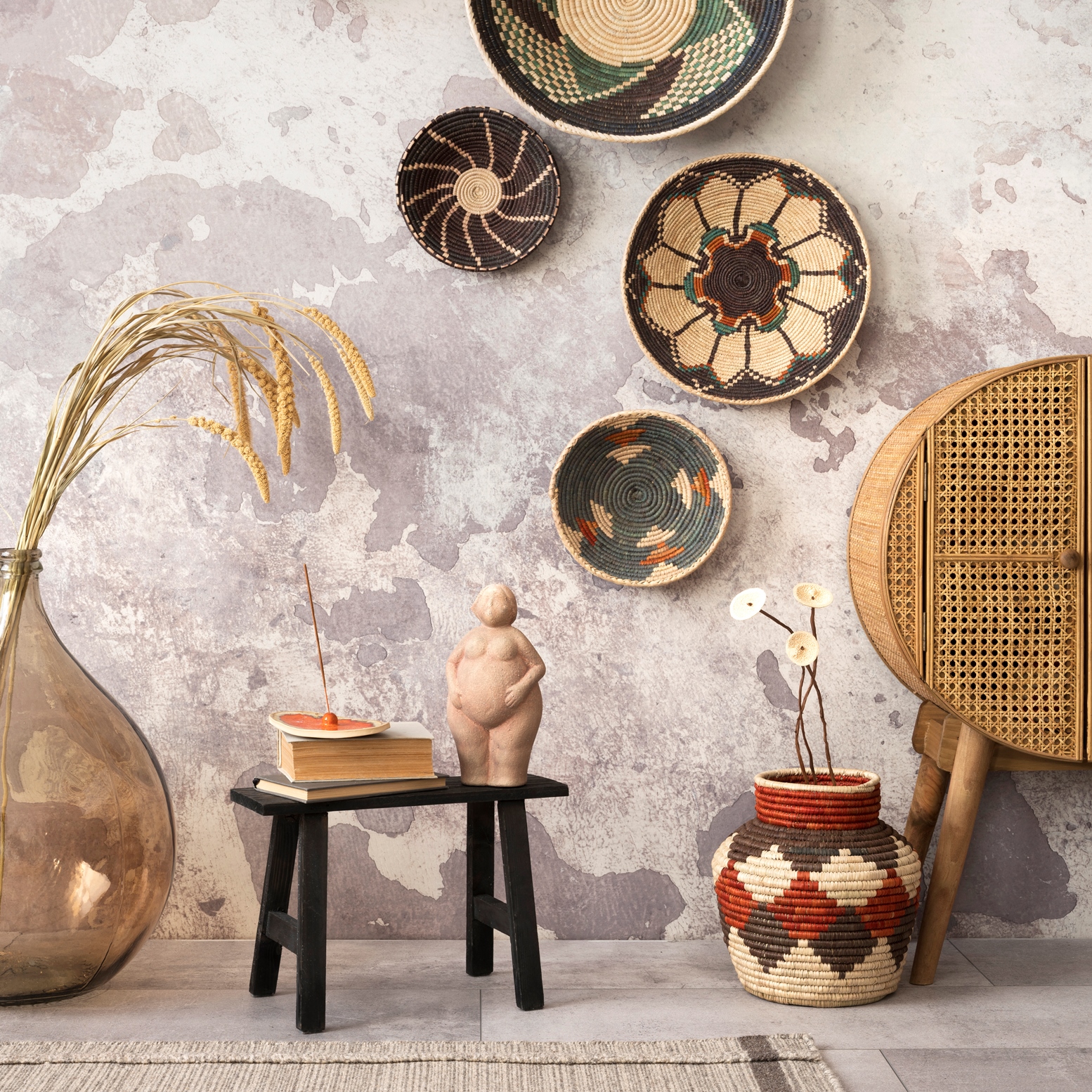The integration of authentic cultural art into contemporary living spaces requires more than aesthetic consideration. It demands understanding, respect, and thoughtful curation. African art, with its rich ceremonial heritage and evolving contemporary expressions, presents unique opportunities for interior design, which go beyond mere decoration.
From traditional Namji dolls that once served spiritual purposes to innovative recycled sculptures addressing modern environmental concerns, African artistic traditions offer collectors meaningful ways to connect their living spaces with global cultural narratives while supporting living artistic communities.
The Art of Integration
Successfully incorporating African art into modern interiors begins with understanding the cultural significance and artistic heritage of each piece. Traditional ceremonial masks, bronze sculptures, and heritage carvings carry deep spiritual and cultural meanings that deserve respectful presentation.
Contemporary collectors are learning to balance aesthetic appeal with cultural sensitivity, ensuring that these powerful cultural artifacts are displayed with the dignity they deserve. The key lies in treating each piece as both an artistic achievement and a cultural ambassador, creating spaces that honor the traditions from which these works emerge while enhancing contemporary living environments.
Curated Collections and Expert Guidance
Rogl Souvenirs & Gallery in Swakopmund, Namibia, exemplifies how thoughtful curation can bridge traditional and contemporary African art within modern spaces. With six decades of expertise, the gallery offers collectors diverse options spanning oil canvas paintings, bronze creations, wood artwork, and innovative creative recycling pieces.
Their collection demonstrates how different African art forms can complement various interior styles from minimalist contemporary homes that benefit from the bold presence of a single heritage carving, to eclectic spaces where traditional masks can dialogue with creative recycled sculptures. The gallery's educational approach helps collectors understand proper placement, lighting, and cultural context, ensuring that each piece enhances rather than dominates its environment.
Practical Display Strategies
Effective display of African art requires careful consideration of lighting, scale, and spatial relationships. Traditional masks and ceremonial pieces often benefit from dramatic but respectful lighting that highlights their intricate craftsmanship without creating theatrical effects.
Bronze sculptures and contemporary recycled art pieces can serve as striking focal points in modern living rooms or offices, while smaller pieces like Namji dolls or batik art work beautifully in intimate spaces or grouped arrangements. The key is creating breathing room around each piece, allowing viewers to appreciate both the individual artwork and its contribution to the overall interior harmony. Color coordination becomes crucial – the earth tones and vibrant hues common in African art can either complement neutral modern palettes or provide dynamic contrast in monochromatic spaces.
Building Meaningful Collections
Today's collectors are increasingly drawn to African art not just for its aesthetic impact, but for its ability to create cultural connections within their homes. Building a meaningful collection involves understanding provenance, supporting contemporary African artists, and choosing pieces that resonate personally while respecting their cultural origins.
The most successful integrations occur when collectors take time to learn about each piece's background, artistic techniques, and cultural significance. This approach transforms homes into spaces of cultural appreciation and education, where African artistic heritage becomes part of daily life while maintaining its integrity and meaning. For those beginning their collecting journey, starting with contemporary pieces or working with established galleries ensures authentic sourcing while supporting the continuation of these vital artistic traditions.
